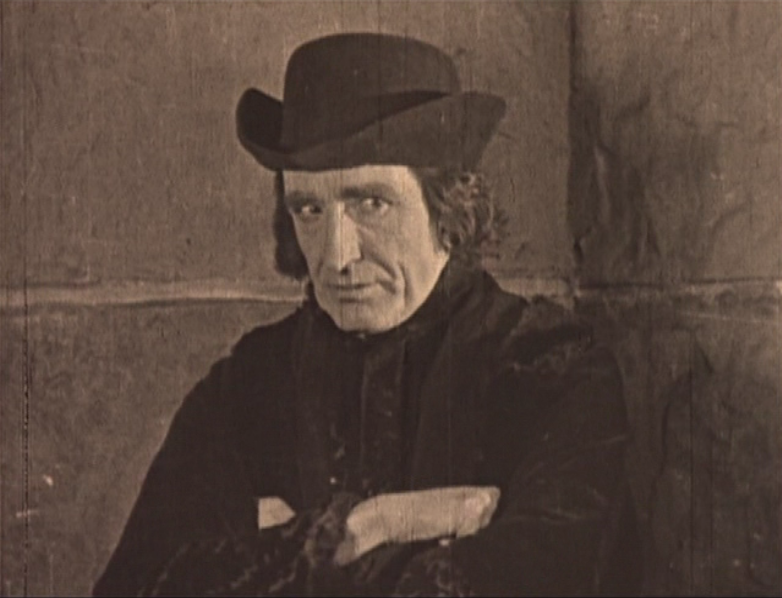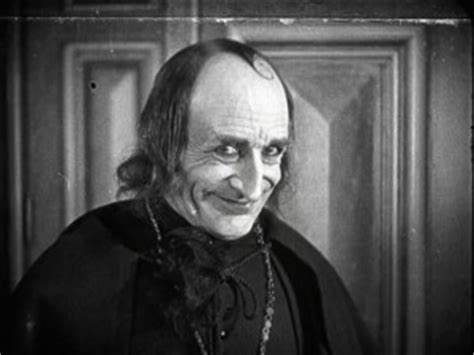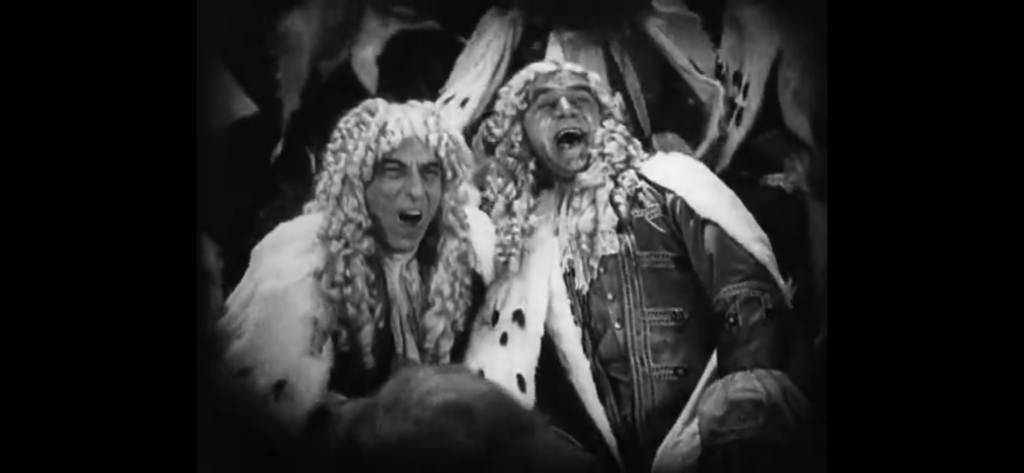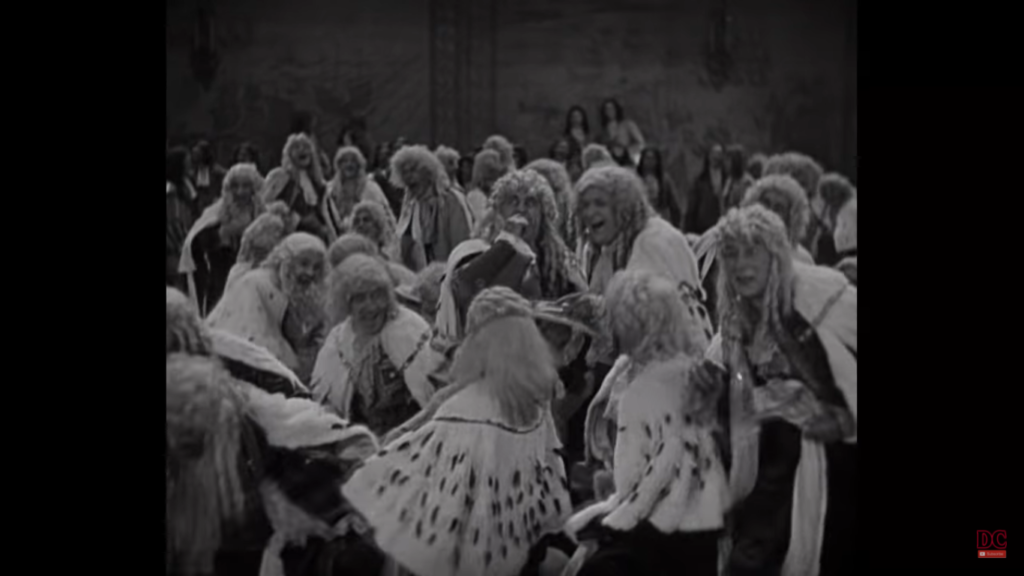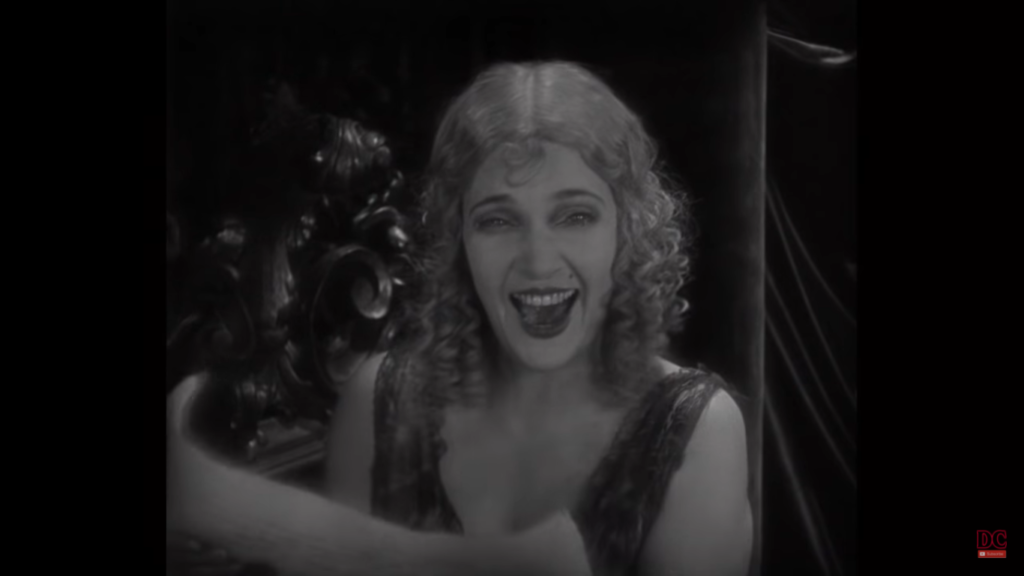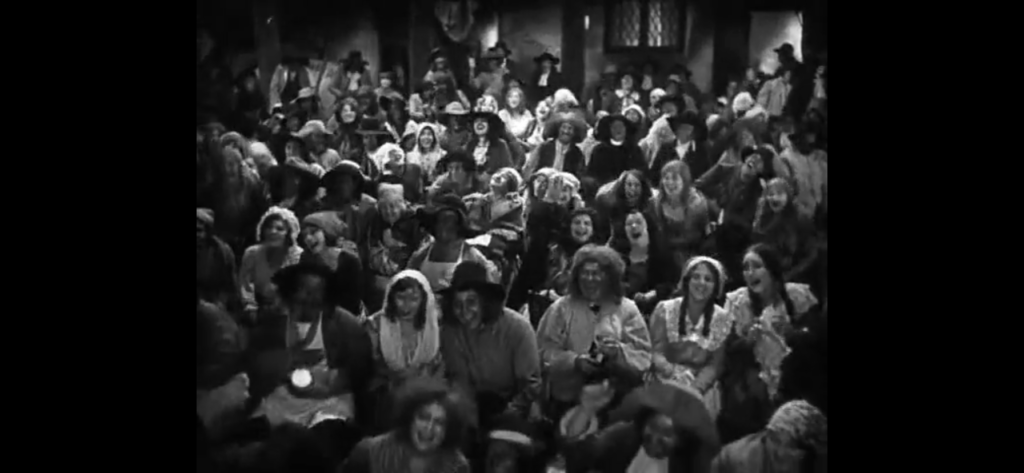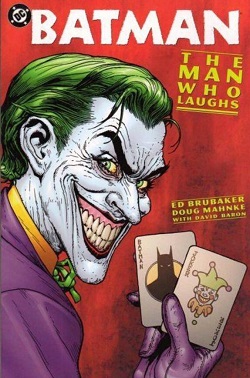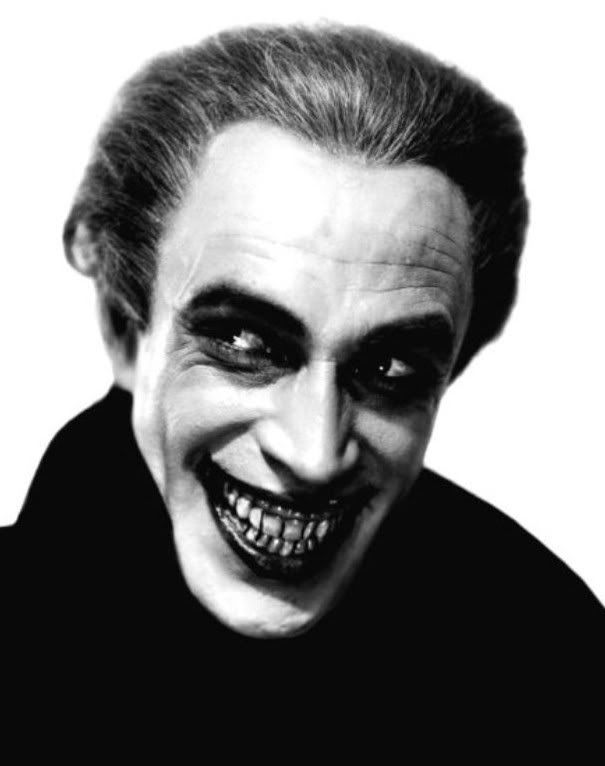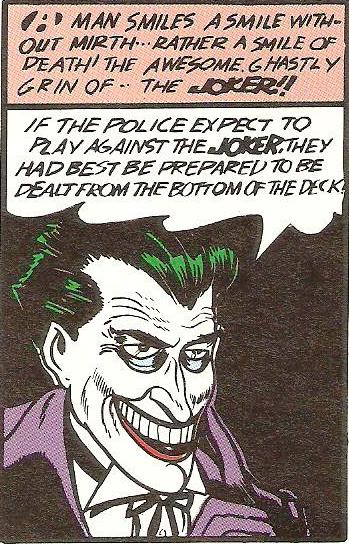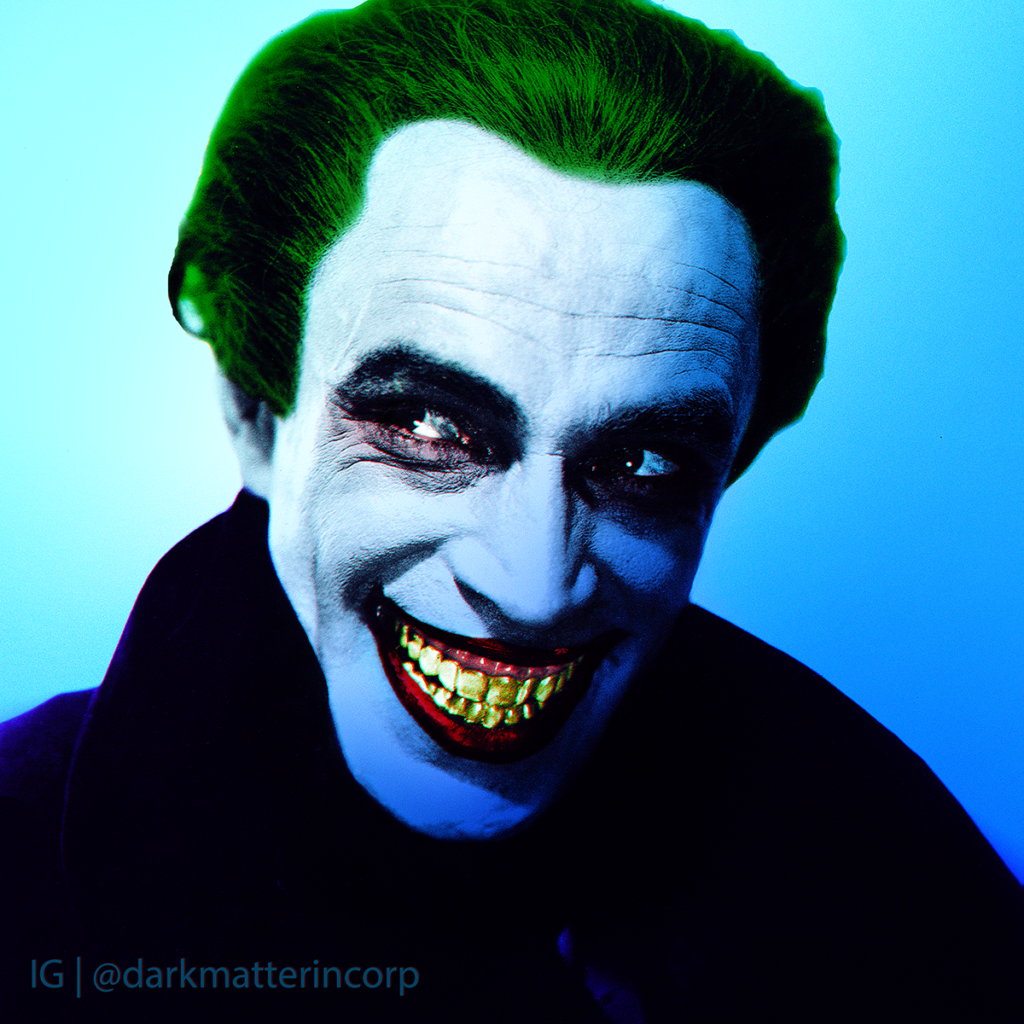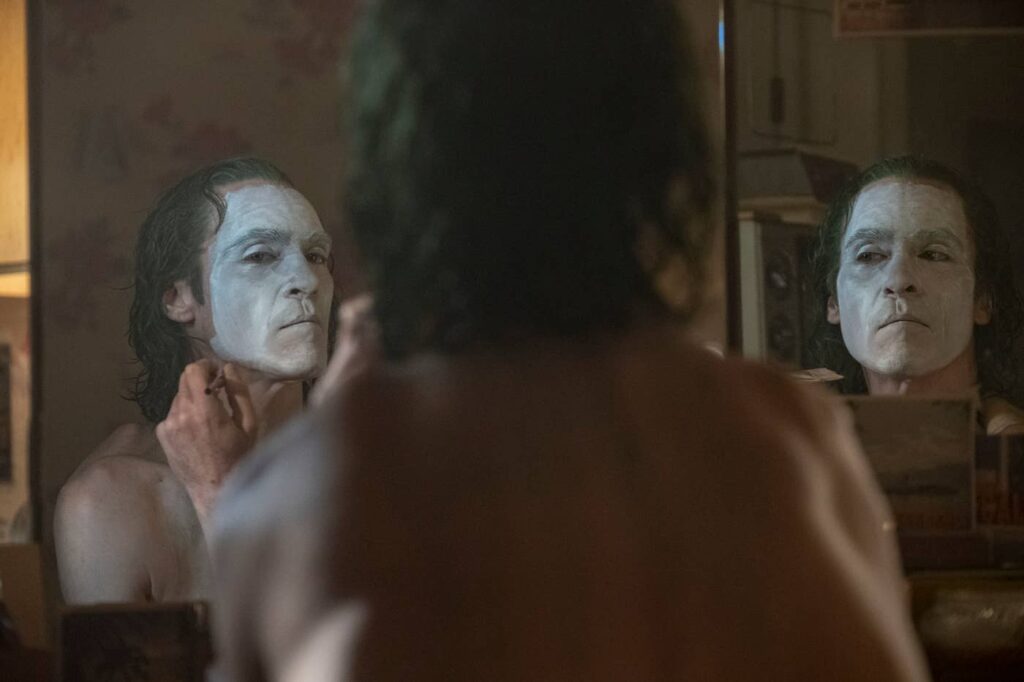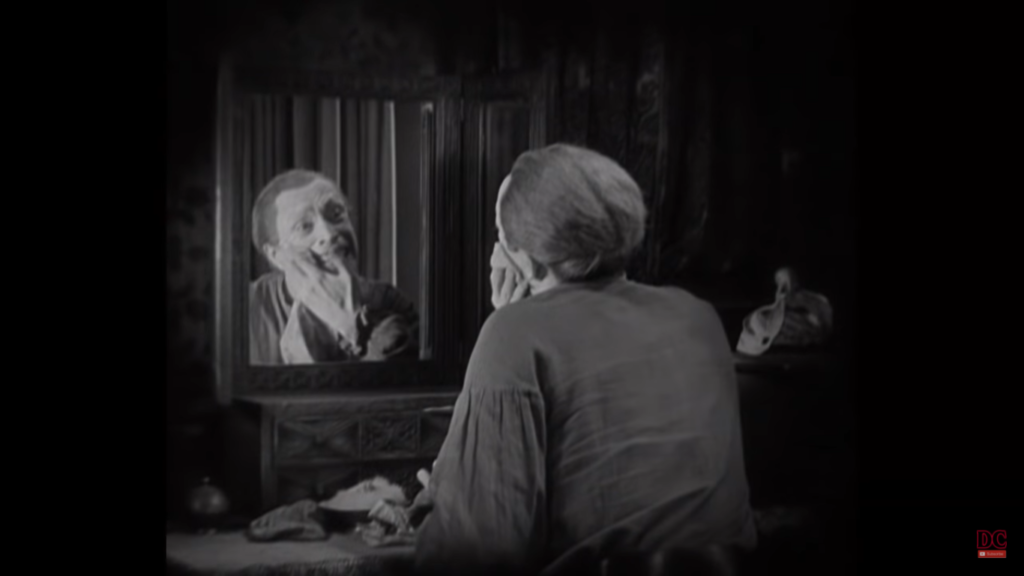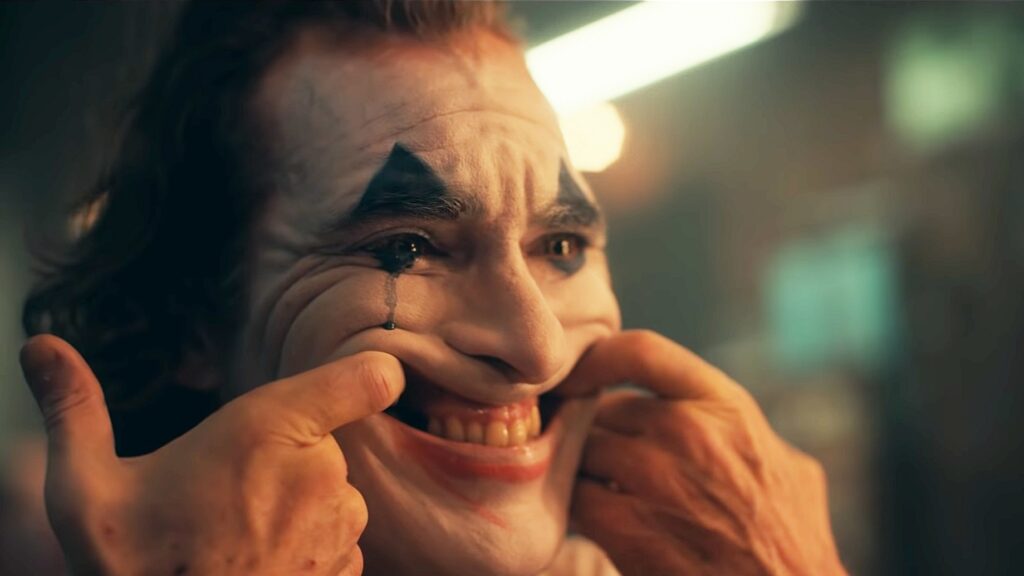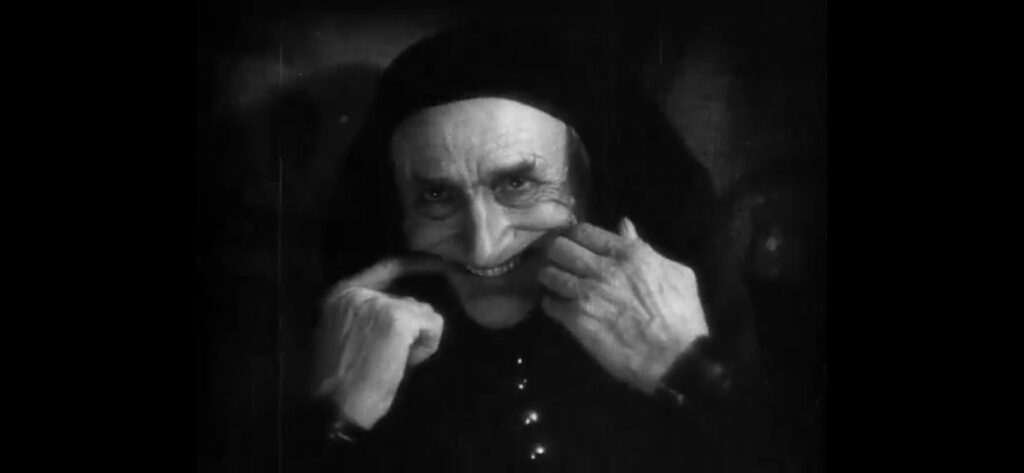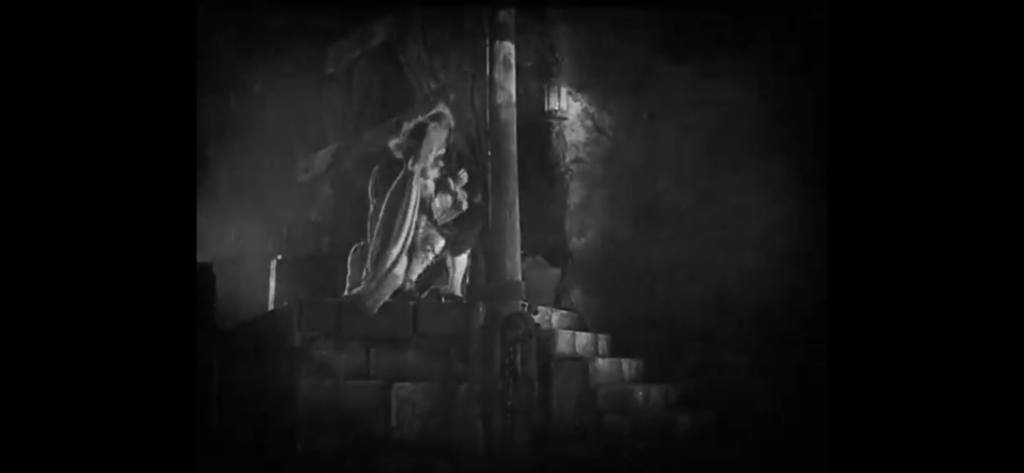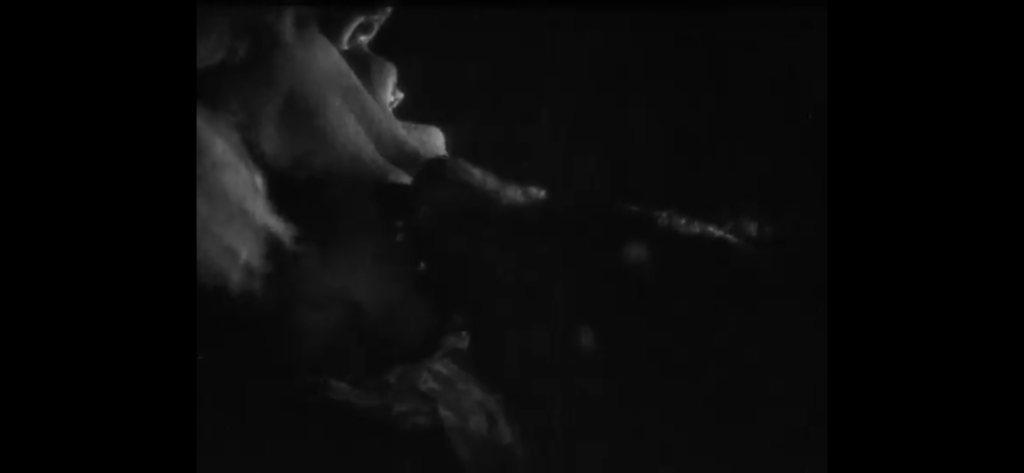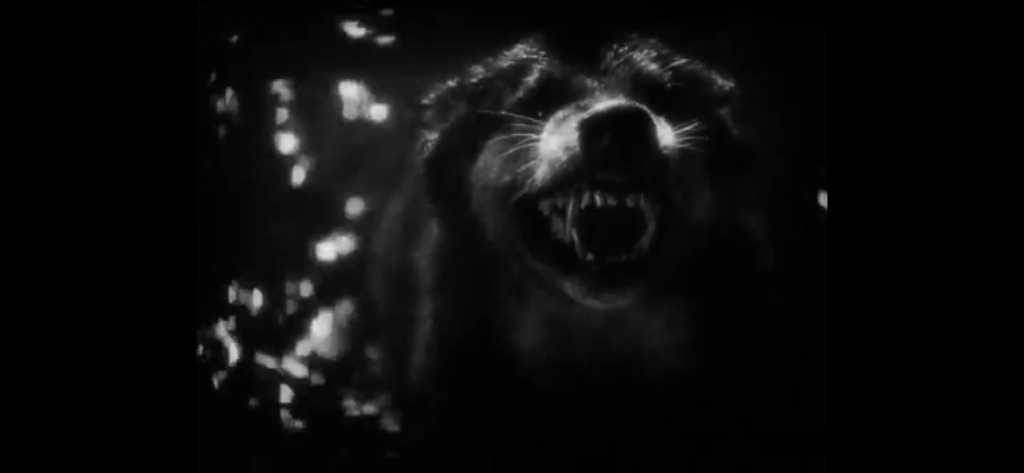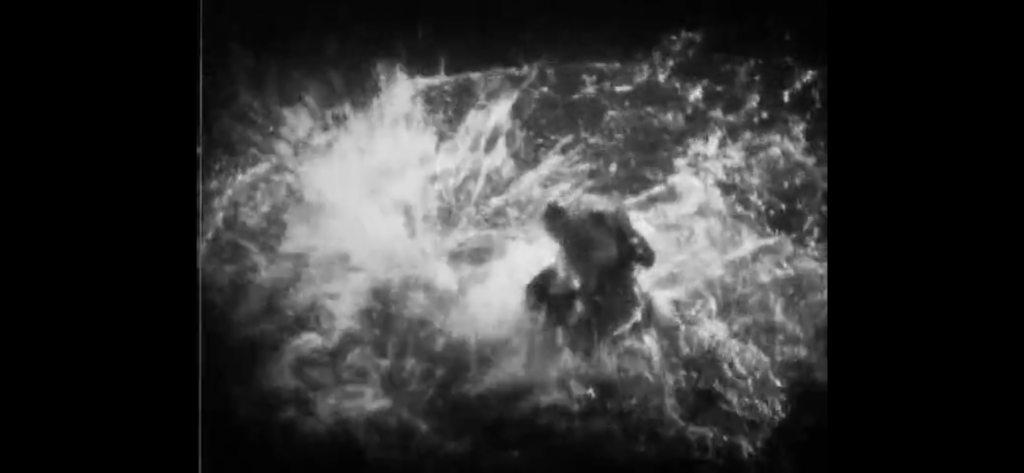The Man Who Laughs is a 1928 American silent romantic drama film directed by the German Expressionist filmmaker Paul Leni.
Produced at the cost of over 1 million dollars and a cast of thousands. This was an extremely high budget for an American film at the time. Ambitious and unconventional films of its era. It was a moment for the expressive power of the silent screen.
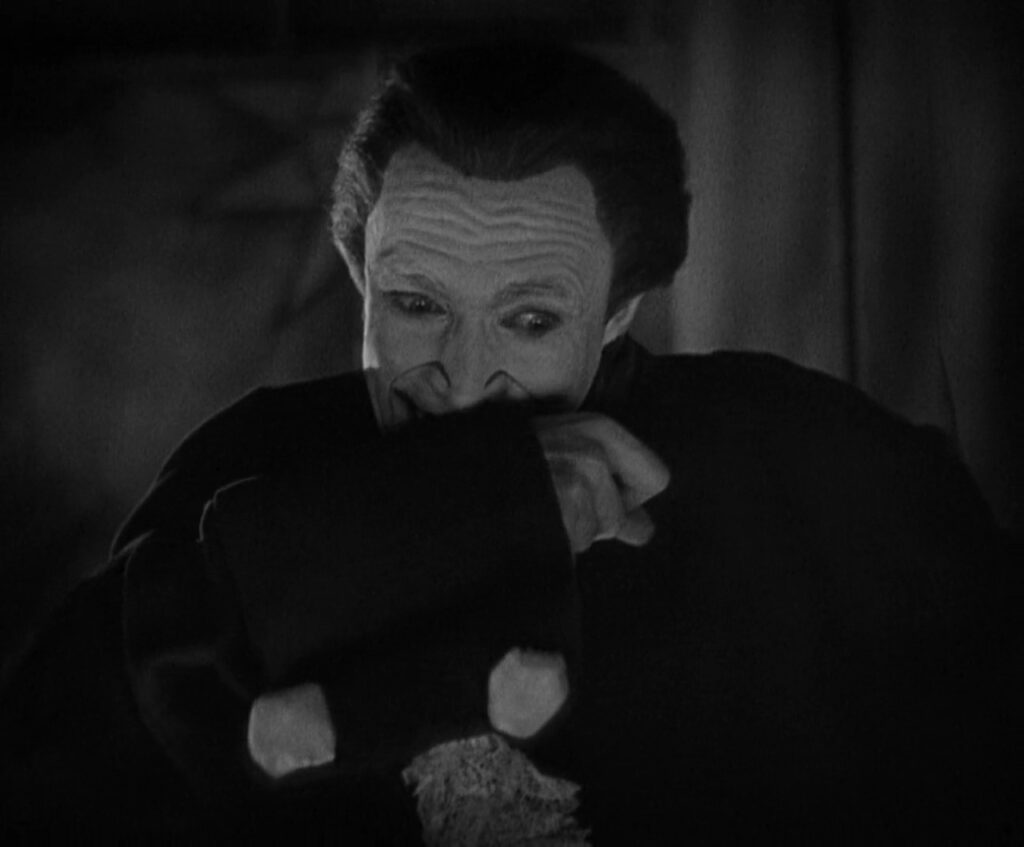
Ties to the the Hunchbacl of Notre Dame.
- Both had a disfigured protagonist and were based on a novel by Victor Hugo.
- Repurposing sets from the Hunchback of Notre Dame.
- Universal wanted to have Chaney (Quasimodo) star in the film but couldn’t get the rights to the screenplay at the time and instead focused on The Phantom of the Opera. By the time they had the right, Chaney was signed to MGM. They then decided to look elsewhere and found German Actor Veidt, suitable substitute for Chaney in the dual role of Gwynplaine and his father Lord Clancharlie. Veidt and the producer they had chosen, Leni, already knew and had worked together.
Another similarity is that the villain in both films, Jehan and Barkilphedro, are played by the same actor Brandon Hurst.
Gwynplaine was played by Conrad Veidt. An icon of expressionism. Lanky figure and angular facial features made him perfect for the role. With no sound and only his mouth stuck in a smile his expressed all emotion with body movements and the dramatic focus of his eyes. Oversized dentures with metal hooks attached, pulled back the corners of his mouth, allowing his face to be drawn back in an unghastly permanent grin. Veidt counteracts Gwynplaine’s perpetual grin by emoting inner pain via his sad eyes, and it’s also seen in the wrinkling of his forehead, the dipping of his head, and his labored body movements.
German Expressionism
- A particular artistic style that first appeared in poetry and theatre around 1910. It became popular in film 10 years later after WWI.
- It comes partly from German Romanticism and gives a subjective view of the world.
- It visualizes the country’s collective anxiety through distorted and nightmarish imagery.
- Expressionists had little interest in their work being aesthetically pleasing. This style flourished after the horrors of WWI, and the inevitable economic devastation that followed.
- German filmmakers were drawn to darker themes and startling aesthetics. There was focus on shadows instead of light as the dominant visual element.
- Very different from American styles of the time. More psychological than literal. We see this expressionist background in the set of the film with a shadowy haunted world.
- Laid the groundwork for the Universal Horror films that would soon follow.
- The first few films that can be described as pure German Expressionism include The Cabinet of Dr. Caligari and Metropolis.
Bodies looking like cardboard cutouts lifelessly swing from gallows, followed by a stark winter scene of the scarred young Gwynplaine being left behind on the dock while a ship leaves the port; the boy then rescues a baby girl left behind to die.
The film was produced and released during the crucial transitional point in American filmmaking when silent cinemas were being rewired for sound, Universal considered whether or not to integrate sound in the film. The issue of dialogue was easily solved due to the fact that Veidt could barely speak with the device in his mouth. It was offered to sound theatres with an orchestral movie tone soundtrack.
Themes
- Mikhail Bakhtin Carnivalesque – the destabilization of social structure; masked aristocrats at the fair with drunken ruffians, a clown being inducted into the house of lords, Ursus, latin for bear, having a pet dog named, Homo, latin for human.
- Physical setting of the fair.
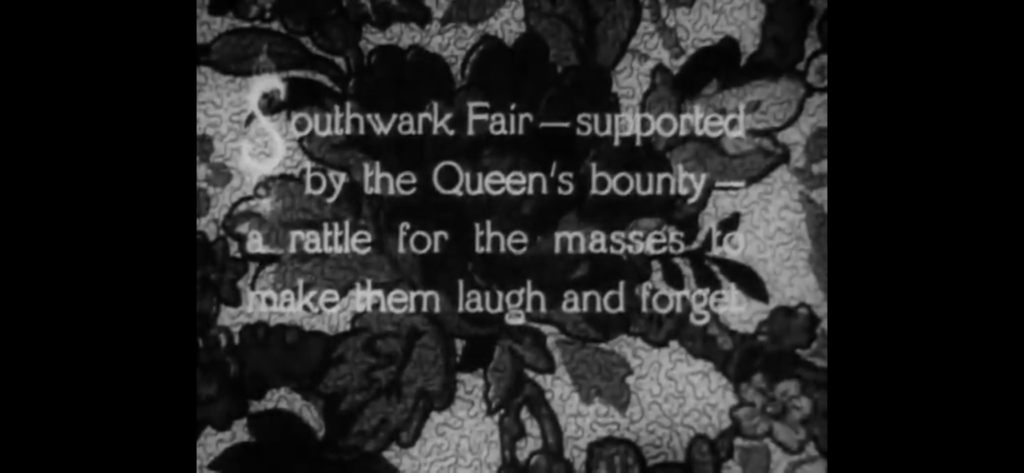
Horror?
- Human drama shot like a horror film.
- Progenitor of the Hollywood gothic, the first film to really exploit the blend of American entertainment and German artistry. Universal horror begins in a film that isn’t really horror.
- Dark themes of revenge, murder, mutilation
- Spoken of in terms of its influence rather than in its own quality.
- “The Man Who Laughs” is not a horror movie, as it is not “The Hunchback of Notre Dame”, of the same time, but there is a common element of the horror genre, the creature’s presence. Gwynplaine is the subject of laughter, debauchery, disrespect, is summarized and classified as a freak wherever she goes. The beauty, Dea, and the beast, Gwynplaine, is a theme carried on from The Hunchback.
At the time of writing, Hugo was living in exile on the Channel Islands after certain humorless French aristocrats took umbrage at the way they were portrayed in a couple of his earlier, highly politicized novels like Les Miserables and The Hunchback of Notre Dame. Hugo wrote another dark political melodrama about aristocratic skullduggery, betrayal, murder, revenge, corruption, and rightful heirs wronged, with a few good-hearted commoners and a sweet love story tossed in for contrast. The whole thing ends in suicide. Leni holds more sympathy for the circus world/characters than the world of the royal court, whose members are made up and costumed to look either utterly ludicrous or insane.
Laughter
Laughter is the weapon used against Gwynplaine. He has no sense of self-worth. His ugliness is not in shock value as it is in the Hunchback or the Phantom of the Opera but instead of his own self-worth, years of being poked at and laughed at have reduced him to a shrunken shell of a man. He does not consider himself worthy of Dea.
Gwynplaines Protest : a point in the film where he does not hide behind his hands anymore, strengthened by the true love Dea feels for him.
The Man Who Laughs and DC Comics Joker
Joker is the man who laughs most recognizable contribution to pop culture. The specifics of the Joker’s creation, and who first came up with the idea has been hotly contested for decades. But one thing that the Joker’s credited creators, Bob Kane, Bill Finger and Jerry Robinson, all agreed upon was that Conrad Veidt’s Gwynplaine and his rictus grin was their inspiration for the Clown Prince of Crime who made his debut in Batman No. 1 (1940). Those early appearances of the Joker are unmistakably based on Gwynplaine’s look, right down to the hairstyle, combed to a peak in the back. While the character’s look has evolved over the years, comic artists and writers have repeatedly come back to Veidt’ performance and Leni’s film in crafting the Joker.
It is Heath Ledgers Joker in The Dark Knight that not only has a similar grin but also its ties to childhood trauma. Gwynplaine was disfigured to remind him of his fool of a father while Heath Ledgers Joker was his father put a blade to his face and asked, “Why so serious” and “Lets put a smile on that face” before disfiguring him.
Joaquin Phoenix’s Joker did not have a permanent grin, but we still see ties to the man who laughs. His clown makeup is similar to those clowns from Gwynplaines troupe. There are also parallel scenes.
It’s fitting that a film which inspired the horror movie genre would also inspire one of pop culture’s most enduring monsters, the villainous Joker.
The hero of the movie is Homo whose barking in the beginning of the film alerts Ursus of the presence of the children, saving them and bringing them into his home. In the end, Homo again saves the day, guiding Gwynplaine to the boat and attacking Barkilphedro, leading to him drowning in the sea. This justice served counteracts the dark endling of the original Hugo work where it is Gwynplaine that drowns after jumping in the sea, moments after Deas death.



